Abstract
Polydactyly is the most common congenital difference of the hand and foot presenting as a range of defects from minor soft tissue duplications to major bony abnormalities. Although Polydactyly of the hand is reported to occur among approximately 1 in 1,000 live births, the co-occurrence of hand Polydactyly on hands and polydactyly on feet is as rare as one out of 100,000 persons. We report a case of hand and foot polydactyly in twins. One of the twins had polydactyly on both hands and feet, the other had polydactyly on the right hand and both feet. Postaxial polydactyly in monozygotic twins appears on both hands and feet in a different form shows that polydactyly is caused by multiple factors. It has been reported that the mother's infection and drug in addition to hereditary factors are the causes for polydactyly, but since they are unknown yet, it is necessary to conduct a study of them.
REFERENCES
2. Woolf CM, Myrianthopoulos NC. Polydactyly in American negroes and whites. Am J Hum Genet. 1973; 25:397–404.
3. Kim D, Park SK, Kim DC, Oh SJ, Yoo KY. Nationwide estimation for incidence at birth of congenital polydactyly and syndactyly in Korean. J Korean Soc Plast Reconstr Surg. 2003; 30:24–32.
4. Flatt AE. A test of a classification of congenital anomalies of the upper extremity. Surg Clin North Am. 1970; 50:509–16.

5. Temtamy SA, McKusick VA. The genetics of hand malformations. Birth Defects Orig Artic Ser. 1978; 14:i–xviii.
6. Stelling F. The upper extremity. Ferguson AB, editor. Orthopedic surgery in infancy and childhood. Baltimore: Williams & Wilkins;1963. p. 304–8.
8. Zhao H, Tian Y, Breedveld G, et al. Postaxial polydactyly type A/B (PAP-A/B) is linked to chromosome 19p13.1-13.2 in a Chinese kindred. Eur J Hum Genet. 2002; 10:162–6.

Fig. 4.
On the left foot, 5th metatarsal head is wide (A). On the right foot, the 5th metatarsal bifurcate and become ‘Y’ shaped at its distal end (B).
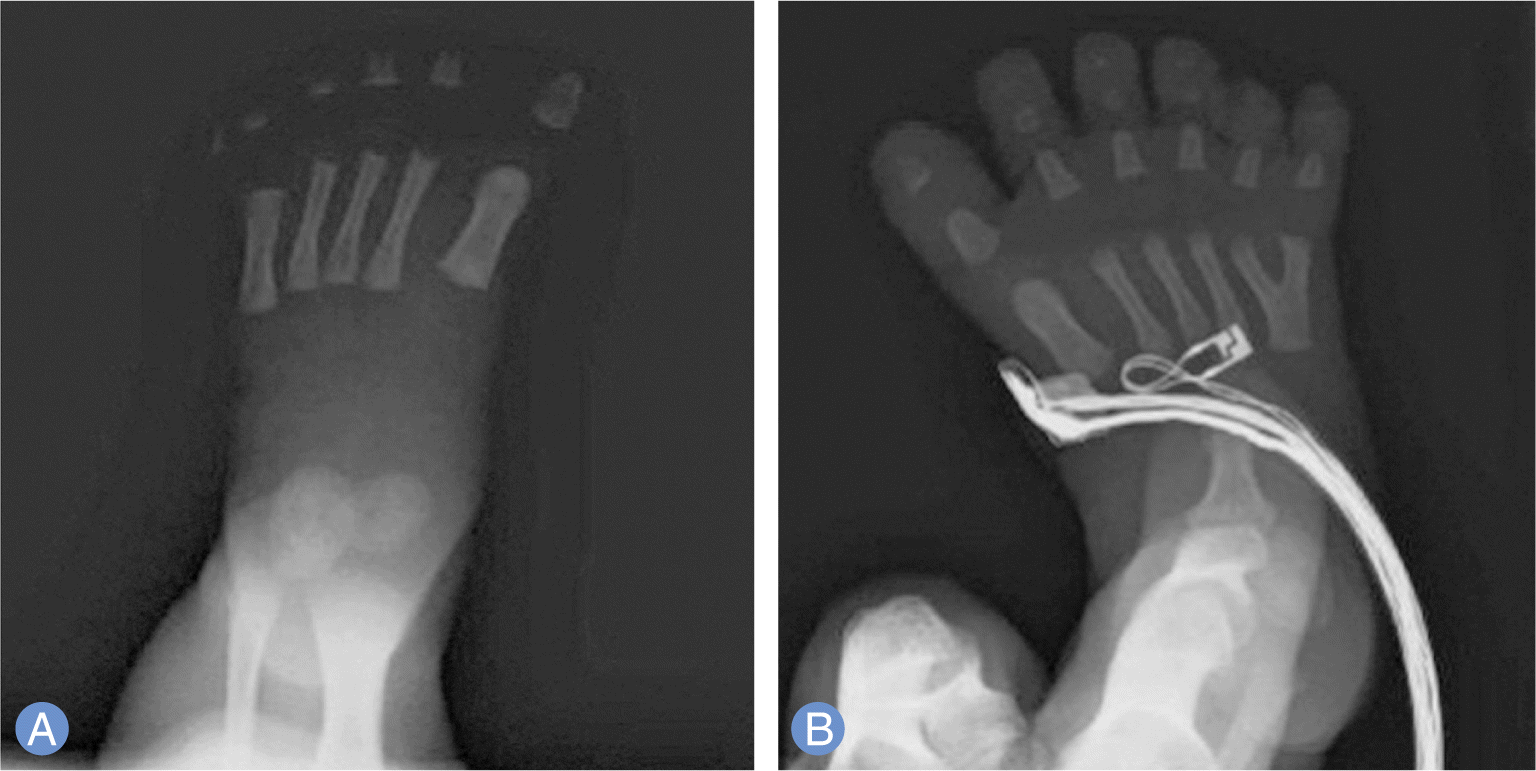
Fig. 5.
On the photograph of twin B, left hand is normal (A). On the right hand, extra digit is pointing to the ulnar side (B).
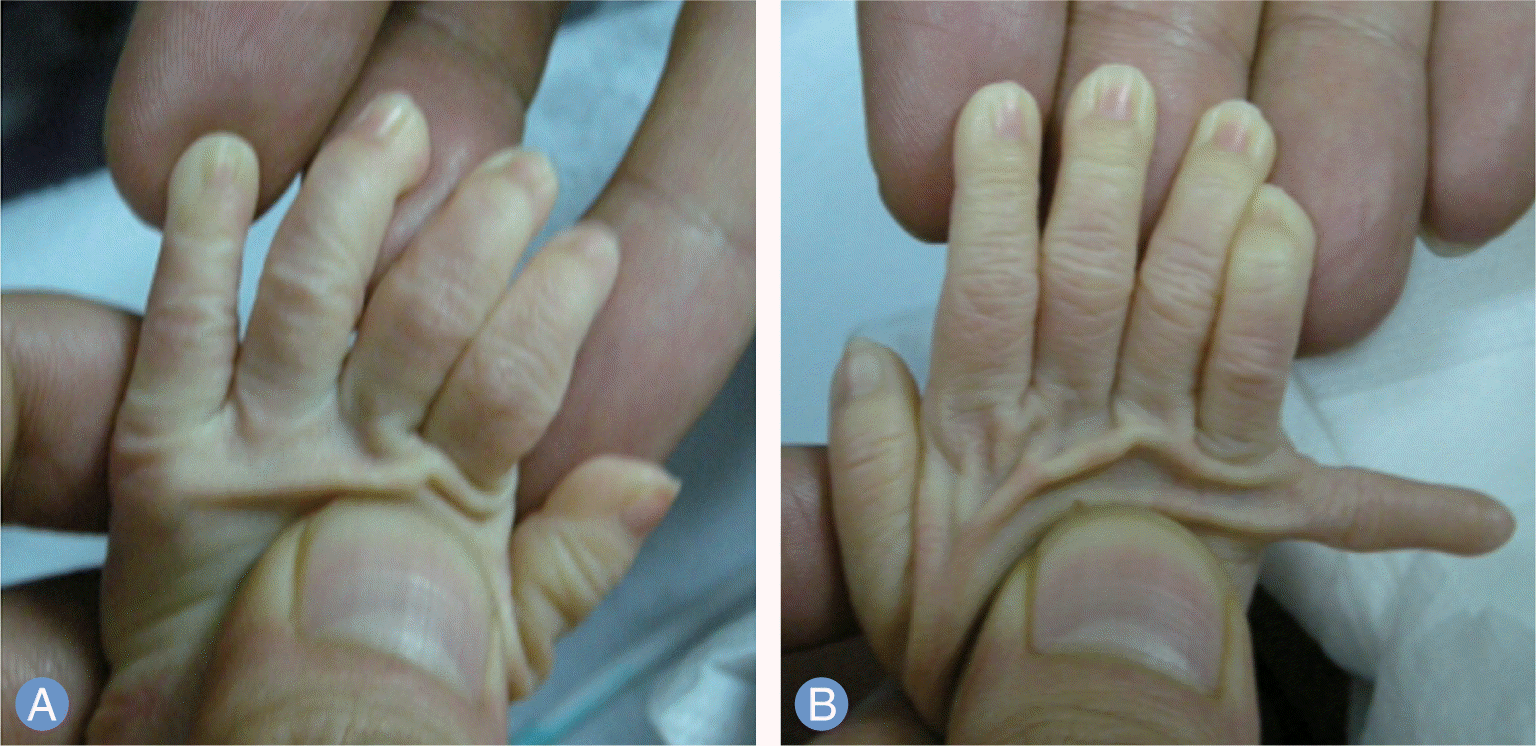




 PDF
PDF ePub
ePub Citation
Citation Print
Print


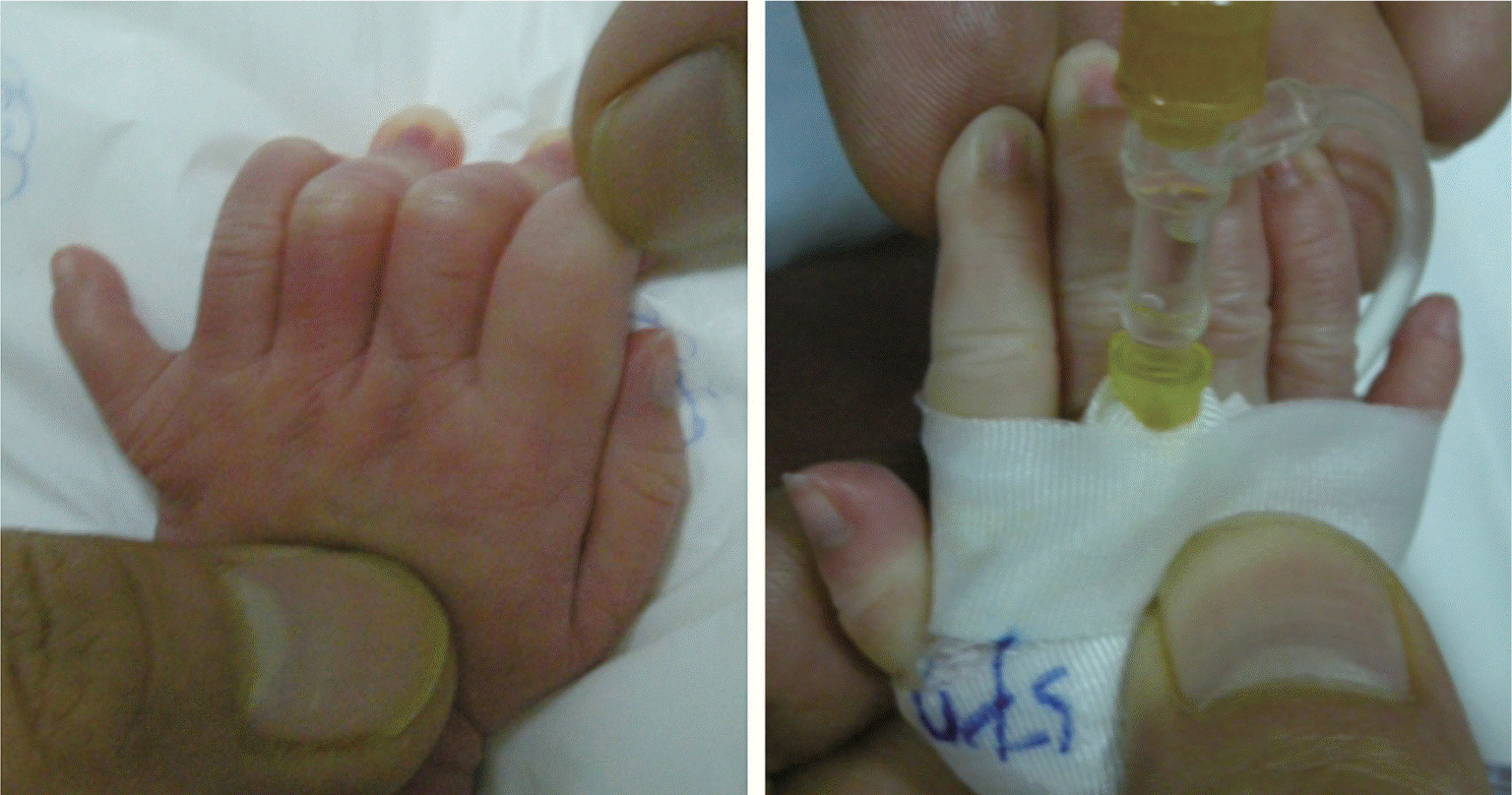
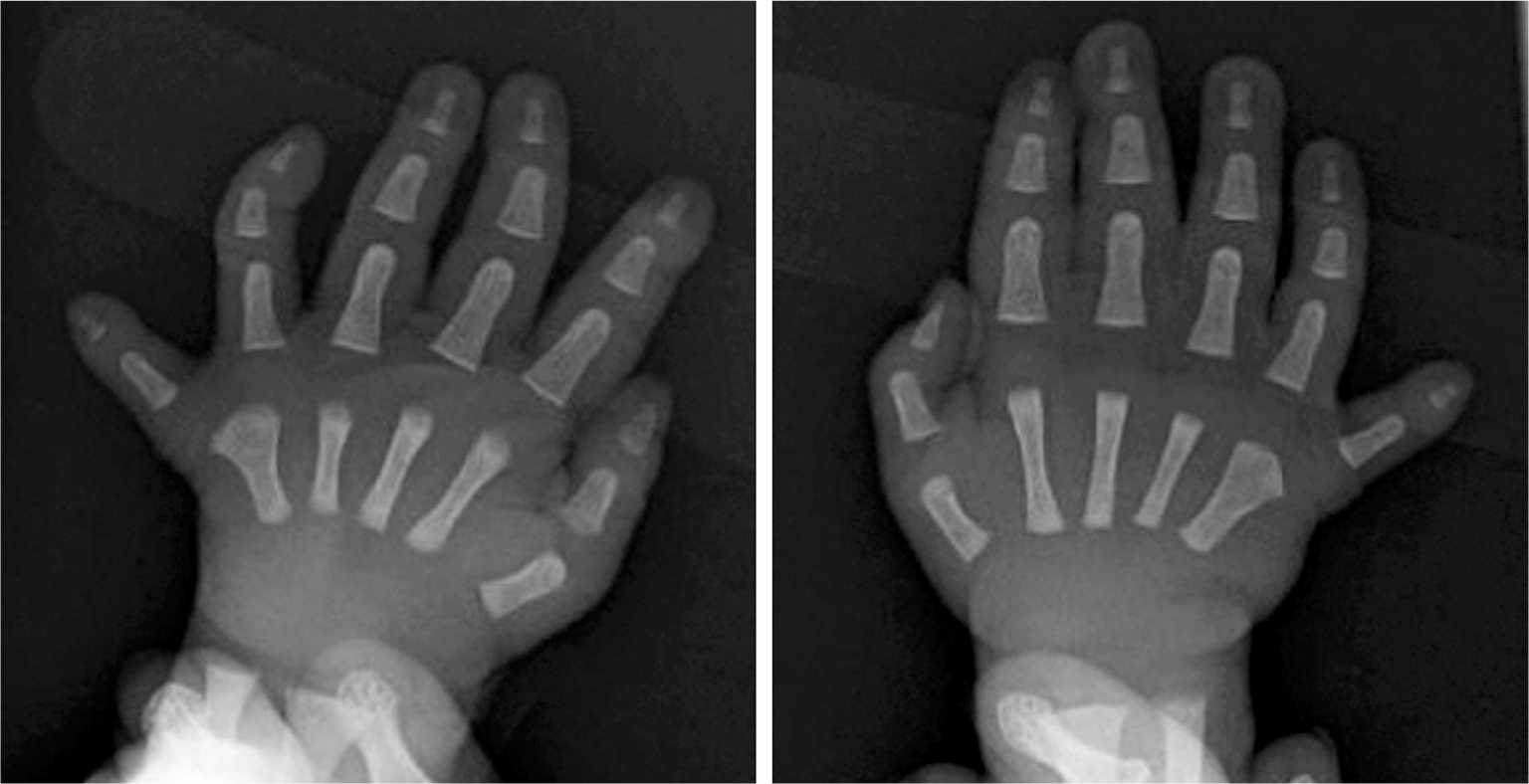
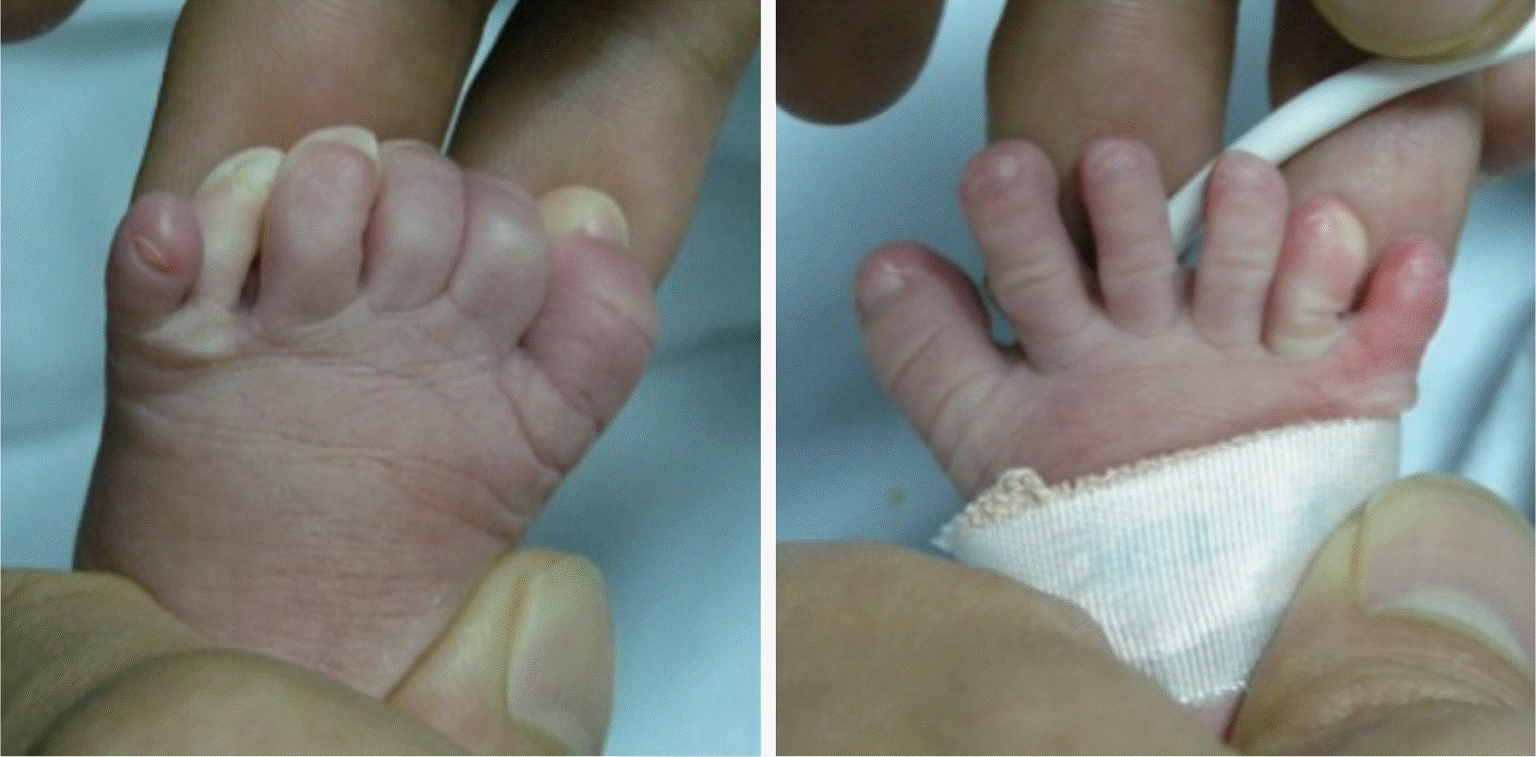
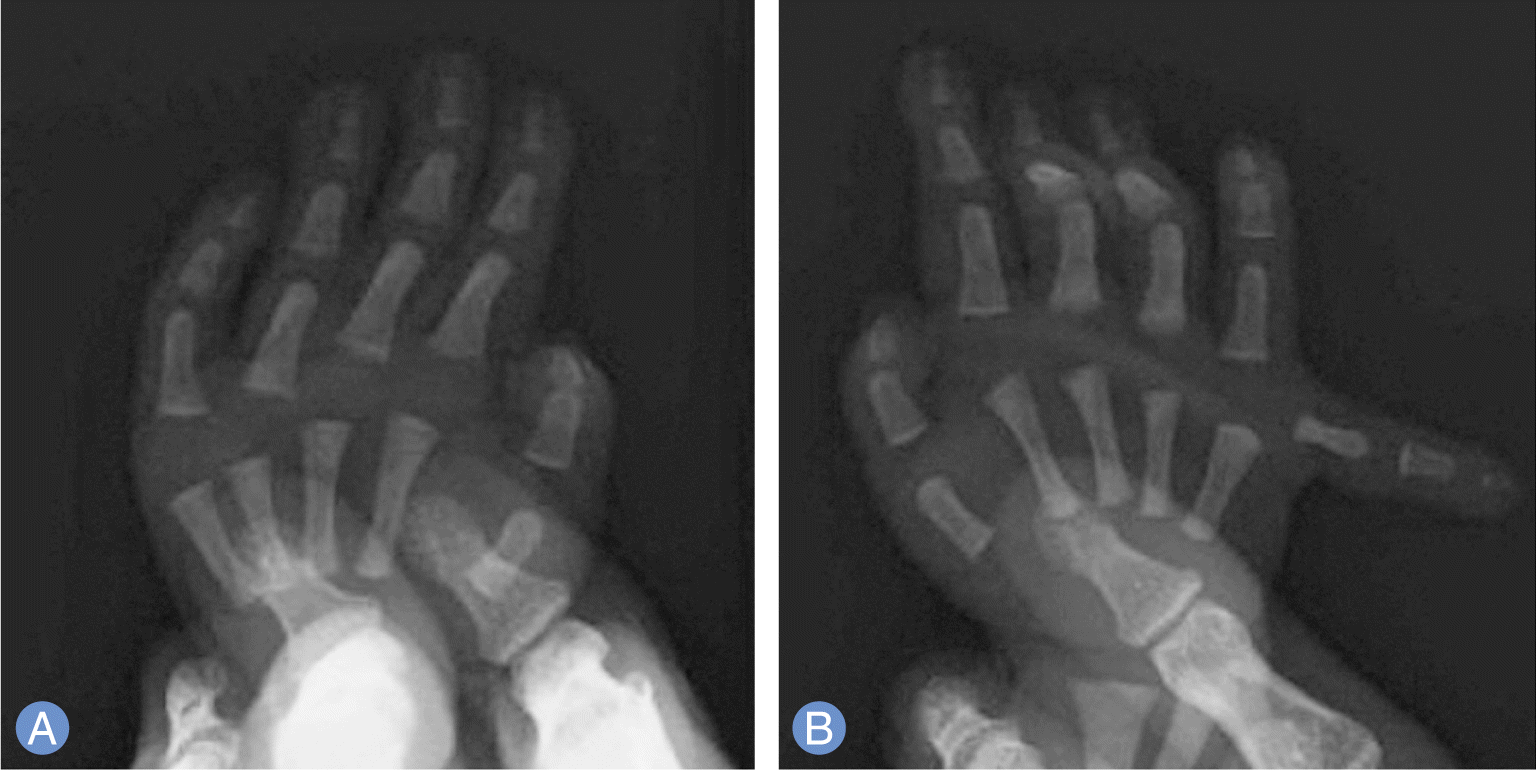
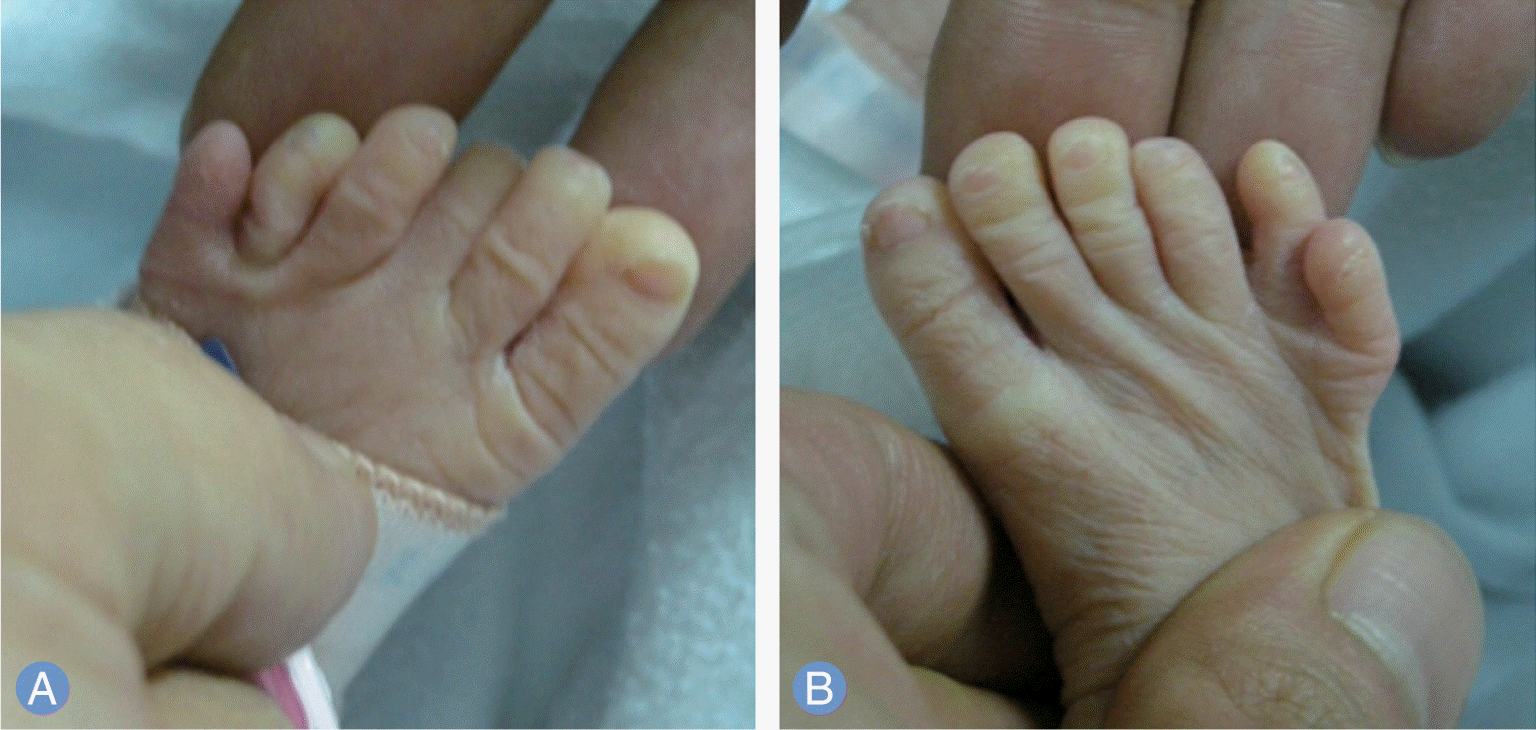
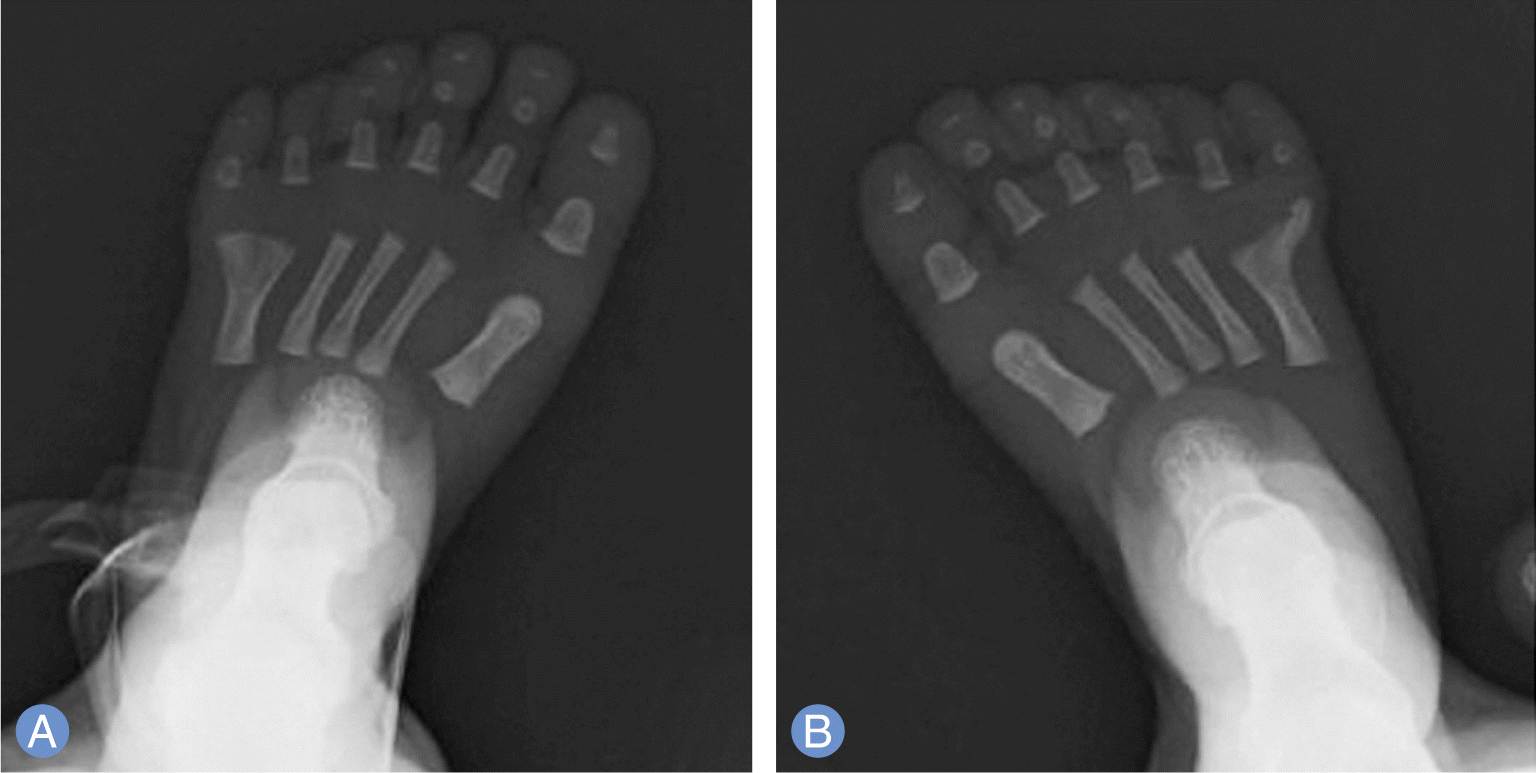
 XML Download
XML Download